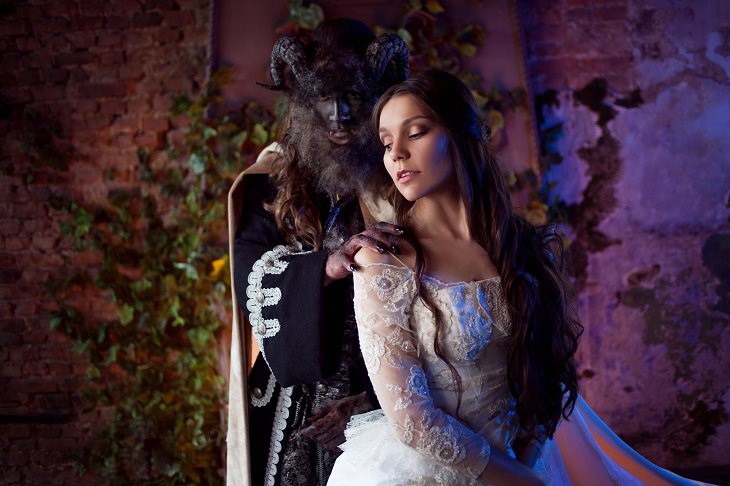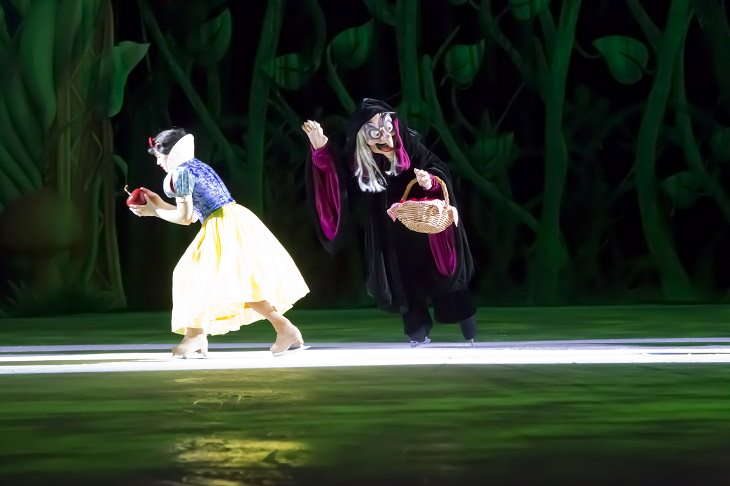

Once upon a time, there was a hardworking girl with a heart of gold and a horrible stepmother. She got herself a makeover from a fairy godmother and scored a date at the ball with a prince who tracked her down by her single lost glass slipper…and this is a story that crossed the globe for thousands of years, winning hearts wherever it went.
Although our version of Cinderella was recorded by 17th-century French writer Charles Perrault, according to the well-respected scholarly website Sur La Lune Fairy Tales, there could be as many as 1,500 traditional variants of this tale around the world, including “The Girl with the Rose Red Slippers” from Ancient Egypt, and a 9th century A.D. Chinese version that might just explain the story’s fascination with small feet.
This is a fantasy that many people just can’t get enough of. Apparently, the Cinderella area of Sur La Lune receives twice as many visitors as any other tale every day, and the story has inspired countless modern retellings including Walt Disney’s iconic 1950 cartoon, and the blockbuster film Pretty Woman, to name but a few.
2. Hansel and Gretel
This next tale has little to do with hungers of the heart - it’s all about the stomach. During a time of famine, Hansel and Gretel are abandoned in a great forest by their wicked stepmother. Unable to resist eating pieces of a gingerbread cottage, the hungry children are captured by the cannibal witch who lives there. In the end, they have to shove her into the oven to escape.
This is a narrative about the dangers of an unwholesome appetite and the children’s drive for survival is as morbidly fascinating as a true crime story. Maybe this is why it is one of the most frequently visited fairy tales on Sur La Lune Fairy Tales even without any publicity from Disney.
Some scholars believe that the Great Famine of the 14th-century inspired the well-known German version of this fairy tale recorded by the famous Brothers Grimm some 500 years later. Regardless, this gruesome story is one of the most widely told stories around the world.

No plot could be as romantic as this one: A kind and beautiful woman offers herself as a hostage to free her father from the clutches of a fearsome beast. When she falls in love with the Beast, despite his outward appearance, he transforms into a handsome prince. Who hasn’t felt unworthy of a lover yet longed to have our inner value recognized? Who has not dreamed of romantic love with the power to transform and redeem? No wonder this fairy tale, originally a French story, is the second most frequently visited story on Sur La Lune Fairy Tales.
Of the number of retellings, you cannot go wrong with Jean Cocteau’s surreal 1945 film version La Belle et La Bête, but the Disney version is most prevalent and lucrative. So far, Beauty and the Beast has rung the company’s cash register as a Broadway musical, a cartoon, a soundtrack album, and a live-action film.
4. Little Red Riding Hood
Though this story was probably intended as a warning for children to follow instructions, the rebellious Little Red Riding Hood is the most modern of the fairy tale heroines that we have met so far. She sets off alone to visit her grandmother with strict instructions not to step off the forest path – advice that she completely ignores, attracting the attention of a talking wolf who sets out to eat and impersonate Grandma.
What happens next depends entirely on what you read. In the 17th century French version recorded by Charles Perrault, Red gets eaten by the wolf. However, in other tellings across Europe, China, Japan, North America, and Ghana, she’s saved by a guy with an ax, or the wolf chokes on her hood, or he eats both but is forced to vomit them up unharmed.
5. Sleeping Beauty
If you thought Snow White was annoyingly passive, meet Sleeping Beauty, whose main claim to fame is a century-long snooze thanks to a curse put upon by a wicked fairy who wasn’t invited to her christening. Throughout her childhood, everyone coddles young Beauty, but on her 16th birthday, she pricks her finger and off to sleep she goes.
This may be a far-fetched tale, but it’s also a far-reaching one. According to Sur La Lune Fairy Tales, it dates to the “Volsunga Saga” from 13th-century Iceland, is found all across Europe, especially Italy, France, and Germany, and even appears in The Arabian Nights.
Disney’s Sleeping Beauty was created in 70mm traditionally inked cells, but it wasn’t a hit at the box office. This might explain why it was Disney’s last fairy tale feature for three decades until the appearance of The Little Mermaid.

Snow White is more of a patsy than the other fairy tale heroines that we have encountered. The most active thing she does is mother a household full of dwarfs. She never fights back against the evil queen who tries to kill her for her youth and beauty and she waits for her prince in her glass coffin. As feminists often put it, she is simply an object to be displayed and desired…patriarchy’s ideal woman, the perfect candidate for Queen.
Regardless of this, Snow White and the Seven Dwarfs was the first animated full-length Disney film, launching a hugely successful franchise and setting the pattern for all those to come. It was also the first film soundtrack ever to be released separately as an album. According to Film Site, the movie took nearly four years and an astronomical (at the time) $1.7 million to make, and was released for its premiere during the Christmas season of 1937.
7. Jack and the Beanstalk
Jack is a bold trickster and a rule-breaker. He trades his family’s only cow for a handful of magic beans and when a giant beanstalk sprouts overnight, Jack takes the opportunity to climb to a giant’s castle and steal all of his magical possessions.
This story is from England. In fact, Jack is actually English, or why else would the giant shout out “Fee fi fo fum, I smell the blood of an Englishman?” Jack is the perfect role model for young imperialists being raised to conquer the globe: Daring, bold, and athletic, he feels entitled to anything he can grab, from the giant’s golden harp to a goose that can lay golden eggs. He even ruthlessly chops down the beanstalk, killing the giant. Can’t you see him claiming the world in the sky for queen and country?
Source: rd
Images: depositphotos